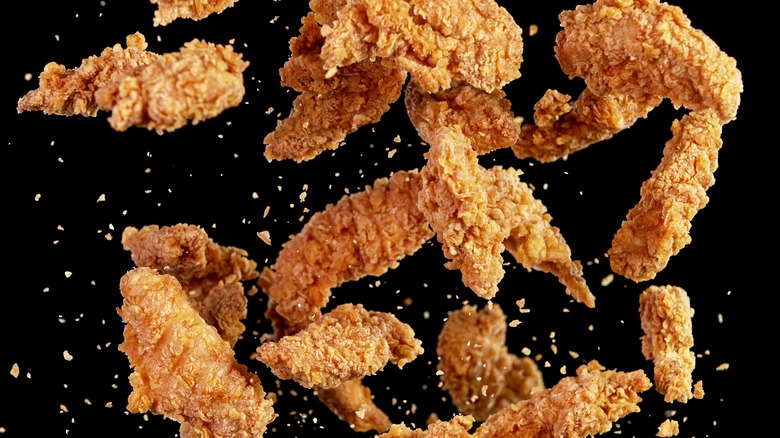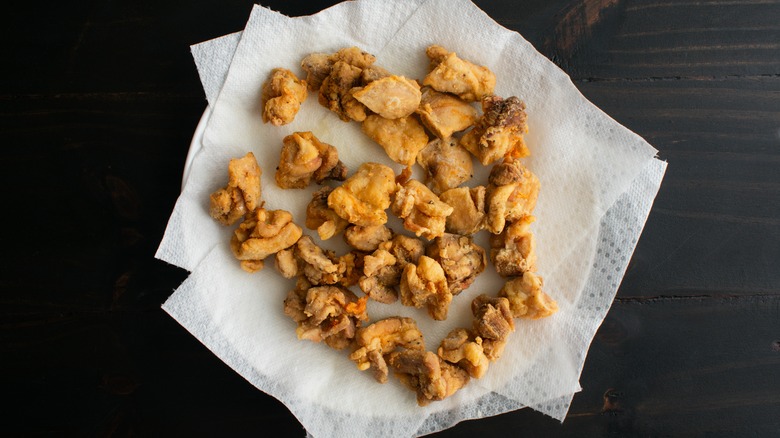Why You Should Fry Chicken In Order Of Largest Piece To Smallest
Imagine the sound of sizzling hot chicken when it hits the oil, the crunch of that first bite, the steam rising from juicy, perfectly cooked meat — yes, we're talking about the soul-satisfying experience of crispy homemade fried chicken. It's a culinary joyride that many are hesitant to take on at home, considering the potential kitchen tornado and the unpredictable results with different cuts. However, there's a simple strategy that can elevate your home frying game to that of a seasoned Southern grandma's: Start with the big pieces and work your way down to the little guys.
Here's the lowdown: Larger pieces of chicken, like thighs or breasts, retain heat better than their smaller counterparts. They'll hog that cozy warmth much longer than small cuts like wings or drumettes, meaning that they can sit out while you finish frying and still be hot come time to eat. What's more, they take their sweet time to cook through properly. By orchestrating your frying sequence from largest to smallest, you're ensuring that all pieces reach the finish line around the same time — piping hot, golden, and ready for the spotlight on your dinner plate.
Organization is key for successful frying
One reason people often don't choose to deep-fry at home is because of the mess that it can create. The best way to combat the clutter and make clean-up a breeze is through organization. Envision your countertop as an assembly line consisting of three stations: Patted-dry raw chicken sorted by size, egg wash, and flour seasoned with spices that will boost the flavor of fried chicken. Having everything in its place, including utensils poised for action, not only keeps chaos at bay but also ensures you're not doing the dreaded chicken dance around the kitchen. For post-frying, set aside a plate near the stove lined with paper towels.
Are you worried you're going to be waging a war against splatter? Arm yourself with a splash guard, the unsung hero of clean stovetops. If you are frying something with a strong smell, an odor-absorbent splash guard is one of those handy kitchen gadgets that you didn't know existed. Remember, there is no way to avoid all splatter altogether, so it is good to keep a few extra paper towels handy.
The oil you choose to fry in matters
The success of fried chicken doesn't solely rely on the frying order. The type of oil you use is a critical factor in achieving the perfect crunch and flavor, so make sure you use one of the best oils for deep frying. Neutral oils such as canola or vegetable oil are ideal for those who prefer no additional taste to their chicken. In contrast, oils like avocado or olive add a subtle flavor and offer some nutritional benefits. Be mindful of oil reuse; although economical, the quality degrades with each fry, often resulting in messier cooks. Store used oil in a clean jar in the refrigerator to extend its life, but discard it once it appears cloudy or smells off.
Methodically frying chicken from largest to smallest is a practical step toward consistent deep-frying culinary success. Integrating the right oil selection, an orderly cooking station, and effective splatter control measures also contribute to a successful and hassle-free process. Approach your frying session with this holistic strategy, and you'll transform a simple meal into an effortless feast. Now, roll up your sleeves and let the hot oil do the magic — crispy, golden, and delicious chicken awaits!


